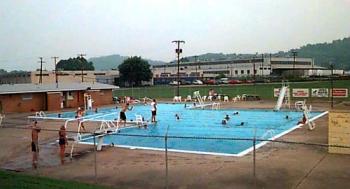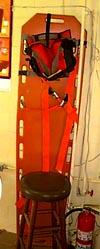Child Drowns in Municipal Swimming Pool


On June 10, 1997, a 5-year-old child drowned at the swimming pool owned and operated by the City of Nitro, West Virginia. The child came into distress and subsequently suffered the physical and neurological trauma associated with a near-drowning as a result of this submersion incident. The child survived for seven days but died on June 17, 1997 as a result of this near-drowning incident.
Prior to the recognition of the child’s distress, there were 4 Lifeguard personnel on duty. Two Lifeguards were stationed in elevated Lifeguard stands, while a third Lifeguard was standing alongside the deep-end Lifeguard stand talking with the seated Lifeguard.
The normal operating procedure for this pool was for two Lifeguards to be assigned and stationed in two of the three elevated Lifeguard stands, while the other two Lifeguards were allowed to rest inside the adjacent locker room building. Other duties required of the non-stationed Lifeguards included walking around the pool and picking up trash, as well as checking and cleaning the locker rooms. When the pool was crowded, one of the two non-stationed Lifeguards would normally be assigned to the third elevated Lifeguard stand. At the time of the incident, the Head Lifeguard intended to assign and station the 3rd Lifeguard but had not yet made that assignment when the incident occurred.
When the child’s distress was realized, he was unconscious and in respiratory and cardiac arrest on the bottom of the 5′ section of the swimming pool. His distress was not recognized by any of the 4 Lifeguards on duty, but rather, by a juvenile swimmer who attempted to rescue the child by bringing him to the surface. After the child was pulled to the side of the pool, the Lifeguards removed him from the water and initiated Basic Life Support CPR procedures until relieved by Fire and Rescue personnel.
One year later, while conducting a site visit at this pool to investigate this incident further, the Lifeguards all seemed very vigilant and diligent in their duties. However, we were only allowed to observe the Lifeguards and the pool for the hour prior to the pool opening to the public. While we were there, however, we did observe many problems associated with the maintenance and upkeep of the pool and the preparedness of the Lifeguard personnel to respond to emergencies. These problems were as follows:
- The Lifeguard stands were in a state of disrepair with broken seats, foot-rests, and ladders.
- The bottom of the pool was dirty and in need of vacuuming and brushing.
- The pool bottom had a sloping hopper bottom from the sides to the middle. Because of this configuration, the diving board should have been removed and all head-first entries into the water should have been prohibited.
- The backboard was sub-standard, and the straps and head immobilizer were not ready for use in an emergency.
- There were no suitably posted rules and regulations. The only signage we saw was an 8 1/2″ x 11″ sheet of paper hanging in the lobby with pool rules.
- An exposed suction drain was found on the wall of the 5′ area of the pool which was large enough for a child to have his hand and arm sucked into it up to his armpit.
We returned to the pool area several hours later and were surprised by what we saw. Each section of the pool was open to the public, but not one Lifeguard was observed on any of the three Lifeguard stands. Upon further investigation, we found three Lifeguards in the lobby of the locker room building talking and eating, while one Lifeguard provided surveillance for the entire pool while standing on the deck at a corner of the pool (note: see individual in white T-shirt).
We were extremely surprised to find this type of attitude and operation, especially considering the fact that a drowning of a child had occurred the previous year.

